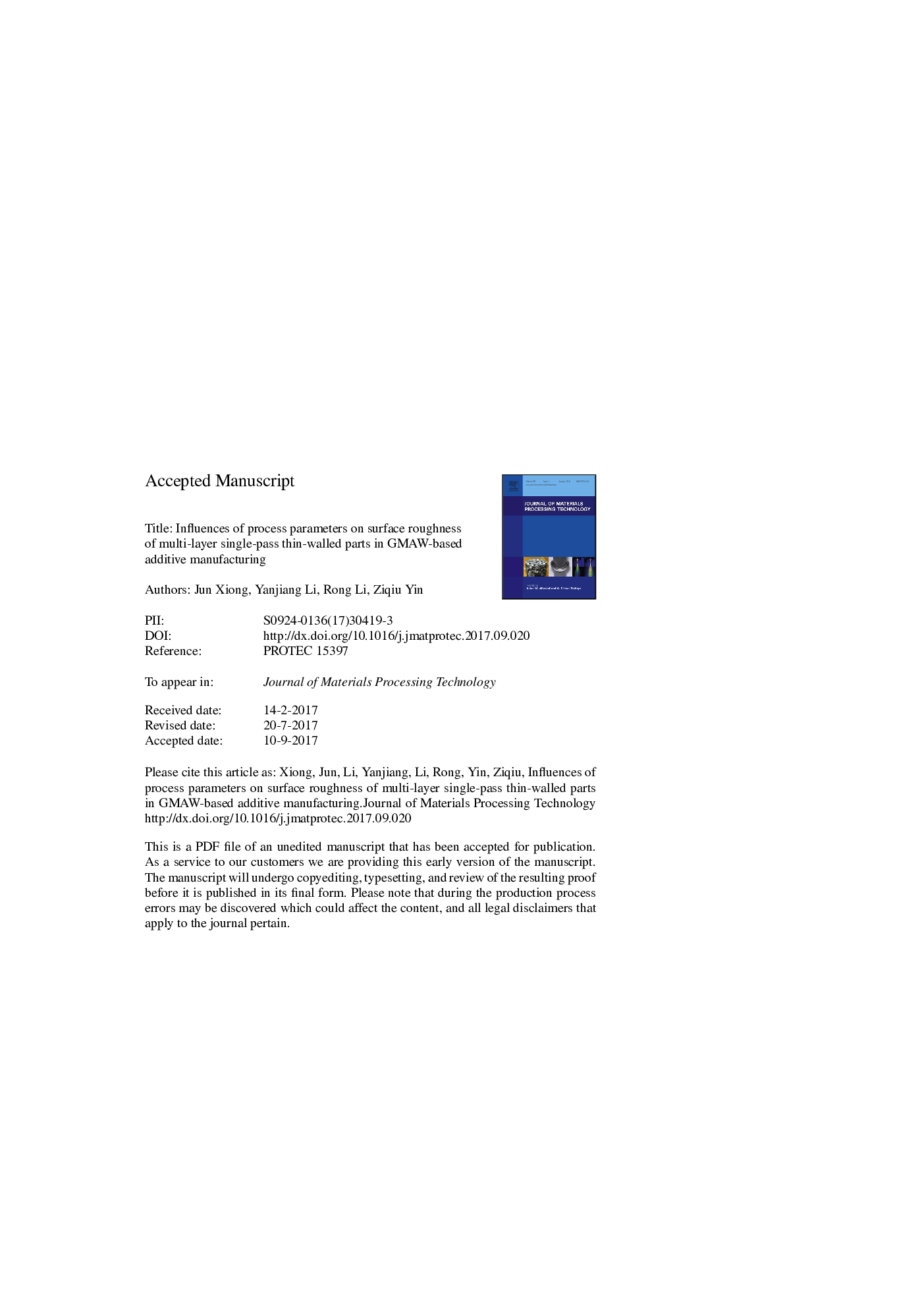| Article ID | Journal | Published Year | Pages | File Type |
|---|---|---|---|---|
| 5017563 | Journal of Materials Processing Technology | 2018 | 25 Pages |
Abstract
Gas metal arc welding (GMAW) based additive manufacturing has been demonstrated to be a promising technique capable of reasonably utilizing materials and energies for manufacturing complex large-size metallic components. However, a critical issue in this technique is the deterioration of surface quality on the side face of fabricated parts. In this paper, a methodology based on a laser vision system was proposed to view the surface appearance on the side face of multi-layer single-pass low-carbon steel parts deposited in GMAW-based additive manufacturing, and a corresponding evaluation method was established to quantify the surface roughness. The effects of main process parameters, such as the inter-layer temperature, wire feed speed, travel speed, and constant ratio of wire feed speed to travel speed, on the surface roughness of thin-walled parts were investigated and discussed in detail. Based on the results, a better understanding of the influential mechanisms of the process parameters on the surface roughness can be obtained. With other parameters being constant, decreasing the inter-layer temperature is associated with the increase of the surface quality of thin-walled parts. Maintaining the ratio of wire feed speed to travel speed constant, the surface roughness increases with the increasing wire feed speed. A lower wire feed speed matching a lower travel speed can decrease the surface roughness.
Related Topics
Physical Sciences and Engineering
Engineering
Industrial and Manufacturing Engineering
Authors
Jun Xiong, Yanjiang Li, Rong Li, Ziqiu Yin,
